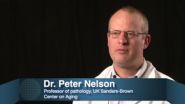(Press-News.org) (PHILADELPHIA) - Although radiation treatments have become much more refined in recent years, it remains a challenge to both sufficiently dose the tumor while sparing the surrounding tissue. A new anti-cancer drug, already in clinical development, may help address this issue by protecting normal cells - but not the cancer - from the effects of radiation. The research, published November 14th in Molecular Cancer Therapeutics, further suggests this drug may also be useful in treating accidental exposure to radiation.
"It was a stroke of luck that the drug that most effectively protected normal cells and tissues against radiation also has anti-cancer properties, thus potentially increasing the therapeutic index of radiation therapy," says Ulrich Rodeck, M.D., Ph.D., Professor of Dermatology and Cutaneous Biology and Radiation Oncology at Thomas Jefferson University, and senior author on the study.
Together with first author Vitali Alexeev, Ph.D., Assistant Professor, Dermatology and Cutaneous Biology, Dr. Rodeck and colleagues tested five compounds that were shown to have radiation-protective properties in earlier studies. The researchers gave the mice one of the five compounds a day before and for several days after radiation treatment. A compound called RTA 408 emerged from this screen as a robust radiation protector and its effect was comparable to the only drug currently approved by the FDA for that purpose. (The approved drug, called amifostine, however, has a number side effects including severe nausea or vomiting that make it an unappealing choice for clinicians.) Sites that are usually most susceptible to radiation damage including the gut and blood cells in the bone marrow were both protected in mice treated with RTA 408.
Using human prostate cancer cells growing in mice, the researchers also showed that RTA 408 did not confer radiation protection to the cancer cells. In fact, when RTA 408 was given alone, without radiation, it also slowed the growth of human prostate cancer transplants in mice. In combination, it further amplified the tumor growth inhibitory effects of radiation.
"It was really exciting to see," says Dr. Rodeck, "that combining radiation and RTA-408 more effectively inhibited tumor growth compared to using either one or the other as single treatment modalities."
Dr. Rodeck and colleagues plan to continue to unravel the molecular underpinnings of these radiation-protective effects in order to understand how exactly this compound works and how its mechanism of action might be improved for clinical applications.
RTS 408 is currently being developed by REATA pharmaceuticals for a number of clinical applications, including a trial currently enrolling patients for a topical form of the drug applied to patients who experience radiation dermatitis.
INFORMATION:
This work was supported by DoD grant W81XWH-12-1-0477, and a pilot project under National Institute of Health grant U19A1091175 to Dr. Rodeck. Additional support was provided by the Prostate Cancer Foundation and by REATA Pharmaceuticals. One of the authors (Keith Ward) is employed by and has a financial interest in REATA Pharmaceuticals, Inc. The authors report no other conflicts of interest.
For more information, contact Edyta Zielinska, 215-955-5291, edyta.zielinska@jefferson.edu.
About Jefferson -- Health is all we do.
Thomas Jefferson University, Thomas Jefferson University Hospitals and Jefferson University Physicians are partners in providing the highest-quality, compassionate clinical care for patients, educating the health professionals of tomorrow, and discovering new treatments and therapies that will define the future of healthcare. Thomas Jefferson University enrolls more than 3,600 future physicians, scientists and healthcare professionals in the Sidney Kimmel Medical College (SKMC); Jefferson Schools of Health Professions, Nursing, Pharmacy, Population Health; and the Graduate School of Biomedical Sciences, and is home of the National Cancer Institute (NCI)-designated Sidney Kimmel Cancer Center. Jefferson University Physicians is a multi-specialty physician practice consisting of over 650 SKMC full-time faculty. Thomas Jefferson University Hospitals is the largest freestanding academic medical center in Philadelphia. Services are provided at five locations -- Thomas Jefferson University Hospital and Jefferson Hospital for Neuroscience in Center City Philadelphia; Methodist Hospital in South Philadelphia; Jefferson at the Navy Yard; and Jefferson at Voorhees in South Jersey.
Article Reference: V. Alexeev, et al., "Radiation protection of the gastrointestinal tract and growth inhibition of prostate cancer xenografts by a single compound," Molecular Cancer Therapeutics, doi: 10.1158/1535-7163.MCT-14-0354, 2014
Nonsmokers sitting in an automobile with a smoker for one hour had markers of significantly increased levels of carcinogens and other toxins in their urine, indicating that secondhand smoke in motor vehicles poses a potentially major health risk according to a groundbreaking study led by UC San Francisco researchers.
The nonsmoking passengers showed elevated levels of butadiene, acrylonitrile, benzene, methylating agents and ethylene oxide. This group of toxic chemicals is "thought to be the most important among the thousands in tobacco smoke that cause smoking-related ...
Cancer Research UK scientists have found more than 400 'blind spots' in DNA which could hide cancer-causing gene faults, according to research published* today (Friday) in Cancer Research.
The researchers found hidden faults in areas that are tricky for gene-reading technology to decode. This technique, which unravels cancer's genetic blueprint, is an important part of the research that scientists carry out to understand more about cancer's biology.
By finding new ways to unlock these blind spots in the future, the researchers hope this will help us understand these ...
"This summer has seen the highest global mean sea surface temperatures ever recorded since their systematic measuring started. Temperatures even exceed those of the record-breaking 1998 El Niño year," says Axel Timmermann, climate scientist and professor, studying variability of the global climate system at the International Pacific Research Center, University of Hawaii at Manoa.
From 2000-2013 the global ocean surface temperature rise paused, in spite of increasing greenhouse gas concentrations. This period, referred to as the Global Warming Hiatus, raised a lot ...
What makes some women more susceptible to heart disease than others?
To help answer that question, researchers at Western University's Robarts Research Institute have identified that an estrogen receptor, previously shown to regulate blood pressure in women, also plays an important role in regulating low-density lipoprotein (LDL) cholesterol levels. LDL, also known as bad cholesterol, drives the process that leads to heart disease.
This finding provides evidence that the hormone estrogen plays a key role in regulating two of the most common risk factors for heart disease ...
VIDEO:
A multi-institutional study has defined and established criteria for a new neurological disease closely resembling Alzheimer's disease called primary age-related tauopathy (PART). Patients with PART develop cognitive impairment that can...
Click here for more information.
LEXINGTON, Ky (Nov. 13, 2014) -- A multi-institutional study has defined and established criteria for a new neurological disease closely resembling Alzheimer's disease called primary age-related tauopathy ...
HOUSTON, Nov. 13, 2014 - A team of University of Houston (UH) chemistry researchers have developed a molecule that assembles spontaneously into a lightweight structure with microscopic pores capable of binding large quantities of several potent greenhouse gases.
"Greenhouse gases, such a carbon dioxide, have received much attention lately because of their potential to dramatically affect Earth's climate, primarily the temperature of the planet," said Ognjen Miljanić, a UH associate professor of chemistry and leader of the team.
While carbon dioxide presents the ...
(SACRAMENTO, Calif.) -- Researchers at UC Davis and other institutions have found that diets rich in whole walnuts or walnut oil slowed prostate cancer growth in mice. In addition, both walnuts and walnut oil reduced cholesterol and increased insulin sensitivity. The walnut diet also reduced levels of the hormone IGF-1, which had been previously implicated in both prostate and breast cancer. The study was published online in the Journal of Medicinal Food.
"For years, the United States government has been on a crusade against fat, and I think it's been to our detriment," ...
WEST LAFAYETTE, Ind. - Researches have uncovered "smoking-gun" evidence to confirm the workings of an emerging class of materials that could make possible "spintronic" devices and practical quantum computers far more powerful than today's technologies.
The materials are called "topological insulators." Unlike ordinary materials that are either insulators or conductors, topological insulators are in some sense both at the same time - they are insulators inside but always conduct electricity via the surface. Specifically, the researchers have reported the clearest demonstration ...
Boulder, Colo., USA - Seismic hazards in the Puget Lowland of northwestern Washington include deep earthquakes associated with the Cascadia subduction zone and shallow earthquakes associated with crustal faults across the region. Research presented in Geosphere this month establishes not only that one of the more prominent crustal faults, the Darrington-Devils Mountain fault zone, displays evidence of strong earthquakes in the past, but that it will likely be a source of strong earthquakes in the future.
Paleoseismic investigations on the Darrington-Devils Mountain fault ...
New Rochelle, NY, November 13, 2014--The two U.S. FDA approved oligonucleotide-based drugs on the market both have a modified chemical backbone made of phosphorothioates. The therapeutic advantages of the phosphorothioate group and the new types of gene expression-regulation oligonucleotide drugs that it is enabling are detailed in a Review article in Nucleic Acid Therapeutics, a peer-reviewed journal from Mary Ann Liebert, Inc. publishers. The article is available free on the Nucleic Acid Therapeutics website until December 13, 2014.
In the article "Phosphorothioates, ...



